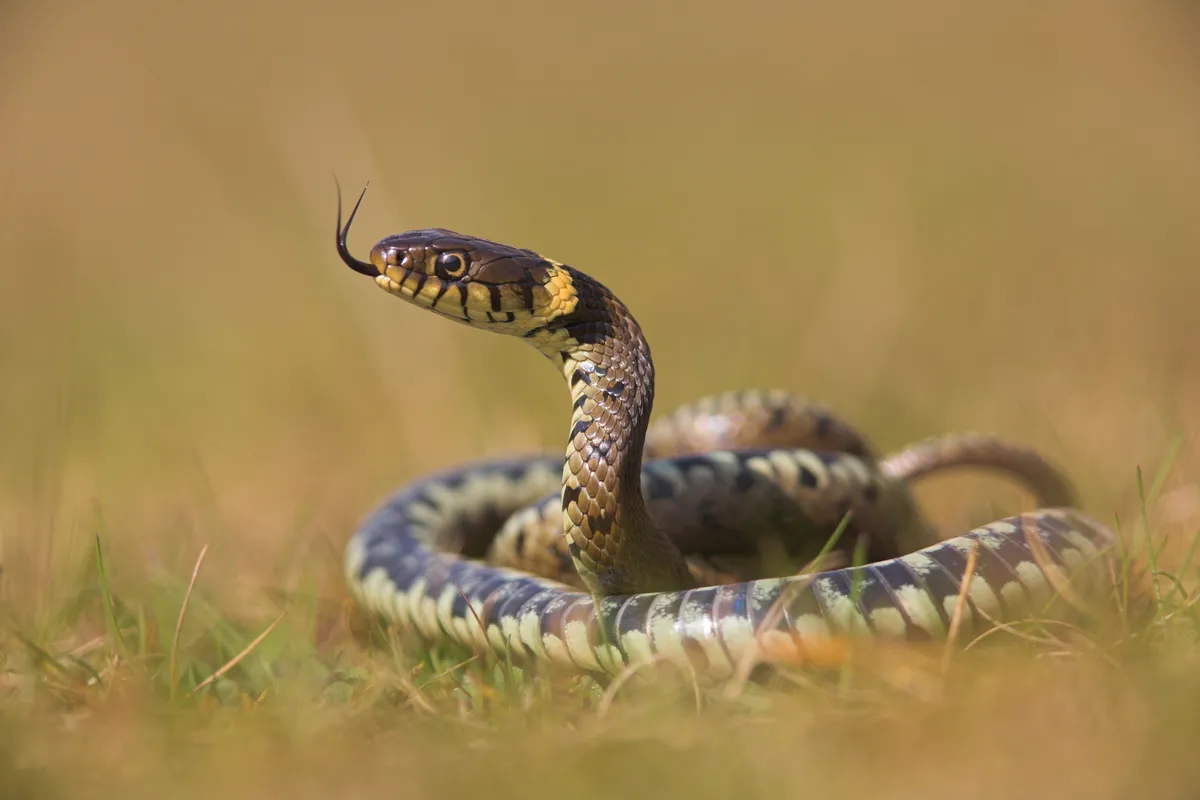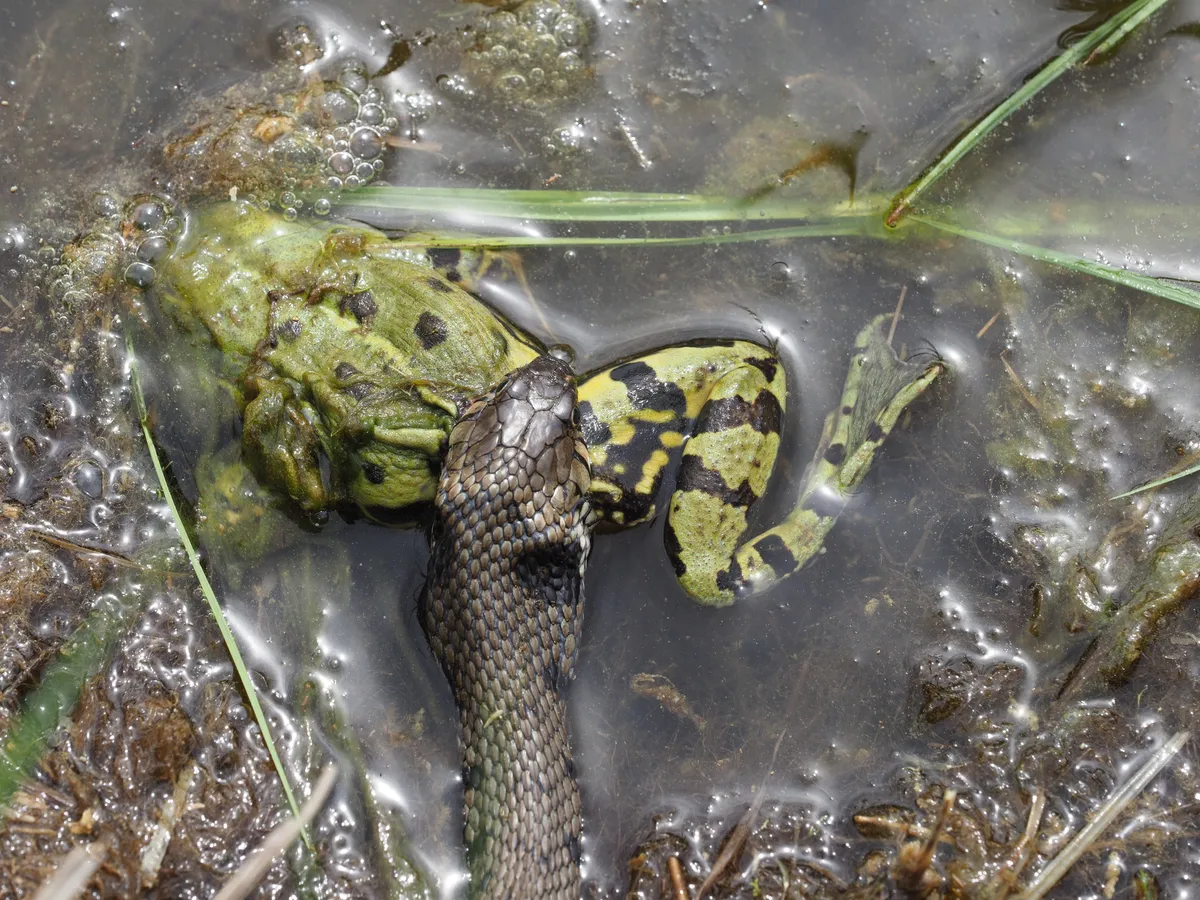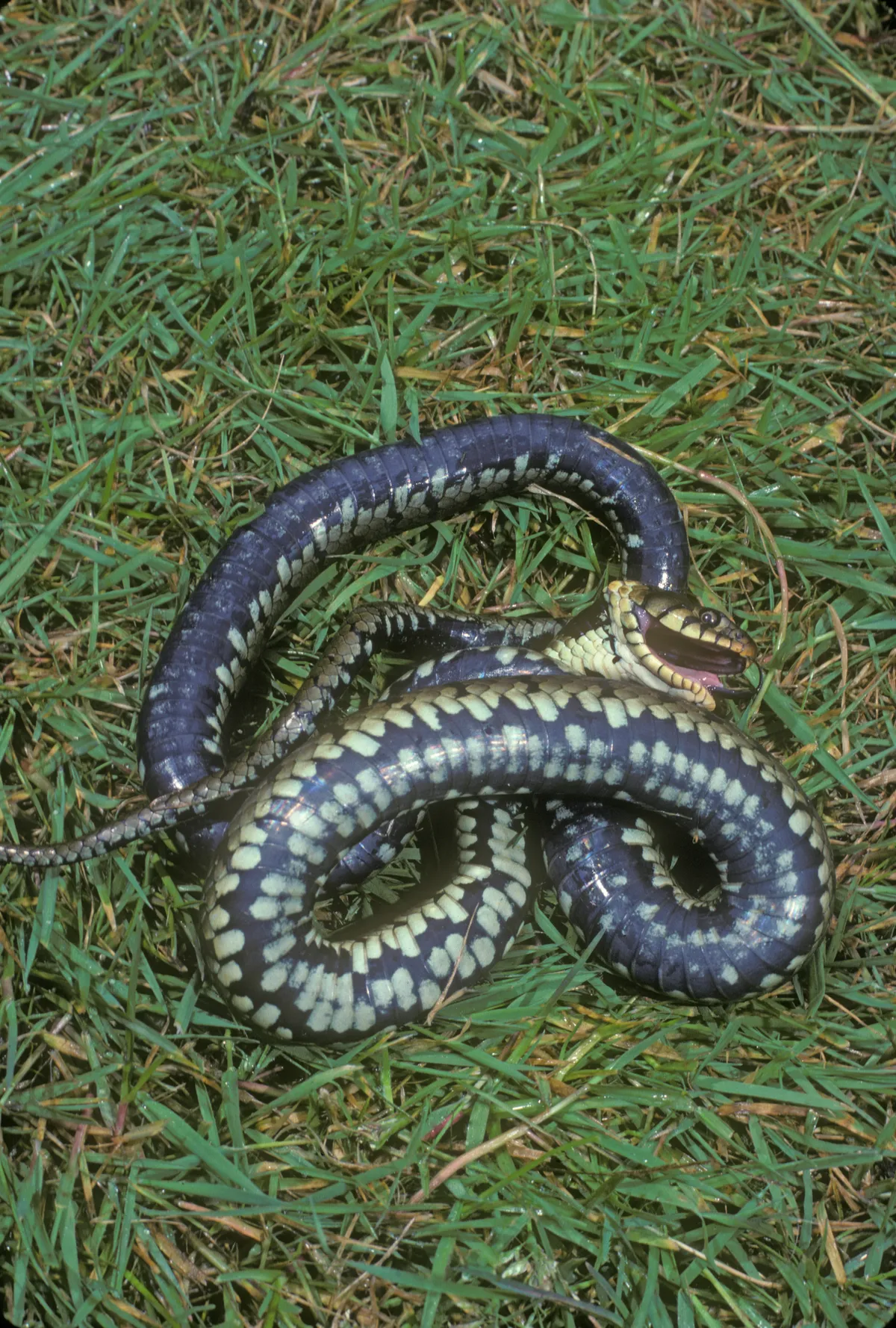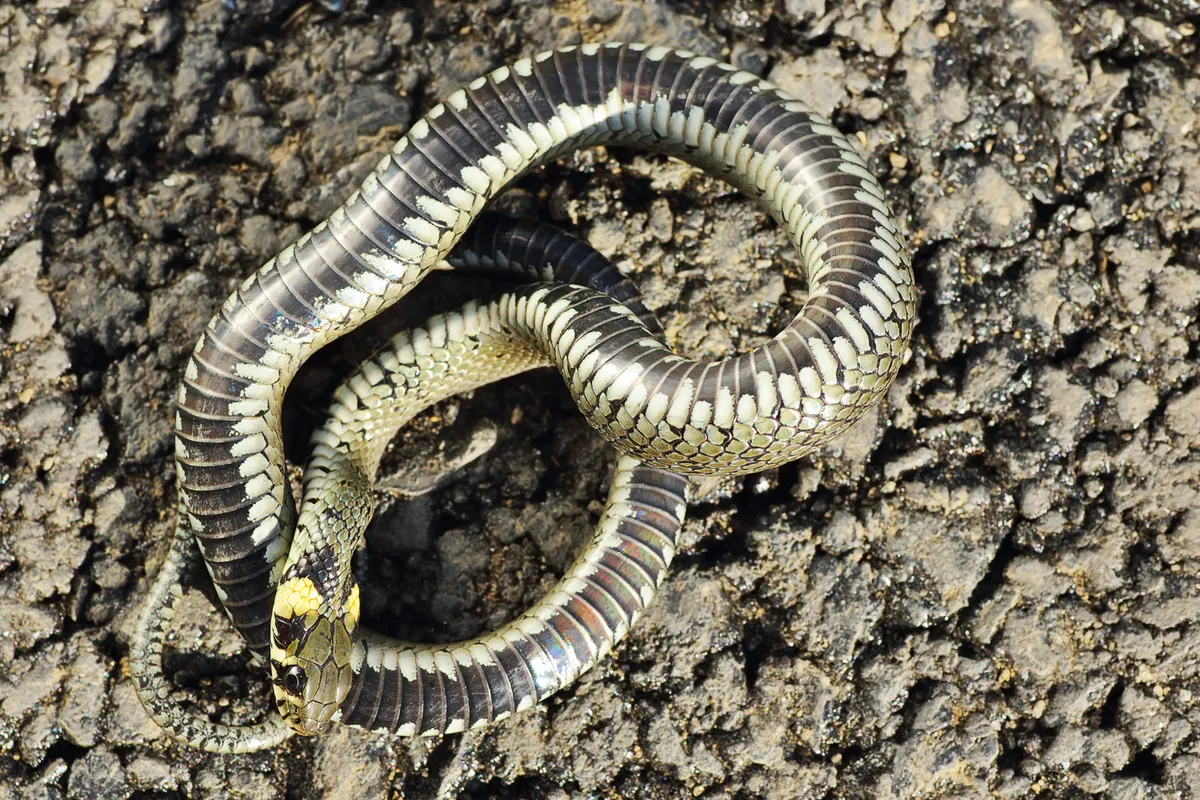The grass snake is one of three native snake species found in the UK, and is our largest native terrestrial reptile.
Learn how to identify them, how they defend themselves, and why you might find their eggs in your compost heap in our expert guide, zoologist and PhD researcher Steve Allain.
How many species of grass snake are there, and where can they be found?
There are three species of grass snakes found in Europe being the barred grass snake, the Iberian grass snake and the grass snake. The barred grass snake is the species found here in the UK, following a taxonomic split in 2017.
- Barred grass snake: Natrix helvetica
- Iberian grass snake: Natrix astreptophora
- Grass snake: Natrix natrix
Barred grass snakes can be found across England and Wales as well as southern Scotland. Elsewhere in Europe they occur in Switzerland, Italy, France and western Germany.
Are grass snakes venomous?
No. The only venomous native snake in the UK is the adder.
Learn more about the UK's native snake species:
How large do grass snakes get?
Grass snakes can grow to a maximum length of around 180cm, making it our largest native terrestrial reptiles. However they rarely reach this maximum size.
The snakes do however regularly exceed lengths of one metre, with the females being larger than males.
How to identify grass snakes

The markings of grass snakes can be rather variable. They are generally olive-green to brown in colour with black bars spaced evenly down their flanks.
Their belly is also covered in black markings that are unique to each individual. Many will be aware of the grass snake’s characteristic yellow and black collar, which is most obvious in juveniles and freshly shed adults.
What habitats can you find grass snakes in?
Grass snakes particularly like wetland habitats such as lakes and rivers. They can however be found in grasslands, open woodlands and in gardens, especially those that contain a pond.
Can grass snakes swim?

Grass snakes are extremely strong swimmers and they can often be seen swimming across bodies of open water, especially after they have been disturbed from basking nearby.
What do grass snakes eat?

Being semi-aquatic grass snakes feed mostly on toads, frogs and newts. They will however occasionally take prey such as small mammals, fish and, occasionally, birds.
Do grass snakes hibernate?

Grass snakes begin hibernation from October, and will typically emerge in either March or April (depending on the weather).
Like most reptiles, they will spend the first few days sunbathing close to the area where they hibernated.
When do grass snakes breed?
Once they are ready, they will move away from where they hibernated and search for a mate and to feed.
Mating takes place in April or May with females laying eggs in June or July, normally in rotting vegetation (such as compost heaps). The rotting vegetation acts as a natural incubator for the developing eggs.

These eggs will then hatch in the late summer months with the hatchlings being miniature versions of the adults.
How do grass snakes avoid predation?
Grass snakes lack venom and instead defend themselves by secreting a foul-smelling and foul-tasting musk from their anal glands.
If this doesn’t deter predators then they will also play dead in an attempt to fool a would-be predator, know as thanatosis behaviour (see below for more information).


Larger snakes may also hiss and feign strikes at attackers whilst flattening themselves out, therefore looking bigger than they really are.
Plus, why do grass snakes tie themselves up in knots?
Such is the flexibility of grass (and other) snakes that they can sometimes tie themselves in knots as they settle into tight grasses or slither into narrow cracks. How intentional this behaviour is remains largely unknown. It certainly doesn’t seem to cause grass snakes any obvious problems. They usually simply pull the knot wide with their super-muscular skeleton and slide through the loop as if the knot weren’t there.
Tying itself in a knot can also be an accidental by-product of the grass snake’s famous ‘play dead’ response. When threatened by predators, these reptiles often bunch their coils and stay stock still, lolling their tongues and rolling their eyes into their skulls with theatrical aplomb.
The behaviour is reasonably common in adults, but rarer in young snakes. One study found that 66% of wild-caught grass snakes exhibited the death-feigning response when threatened, yet no (lab-reared) hatchlings appeared to rely on this adaptive behaviour.
This Q&A originally appeared in BBC Wildlife Magazine, and was answered by Jules Howard.
Steven Allain is an avid herpetologist, photographer, researcher and science communicator. His research covers a range of topics, which most recently has involved investigating the population dynamics of grass snakes and the effects of ophidiomycosis.
One of his main missions outside of his research is to communicate the growing need for interest in the conservation of amphibians and reptiles.
Steven also helps to engage members of the public through a number of different means such as via social media and podcasts, to answer their questions about amphibians and reptiles, whilst also reiterating whilst these two groups of animals are vital components of a healthy ecosystem.
Main image: Grass snake on the woodland floor during the summer. © Jamie Hall/Getty
